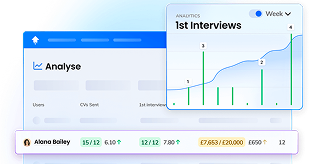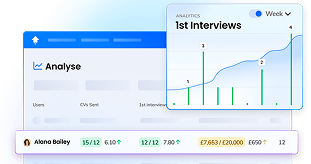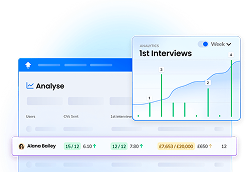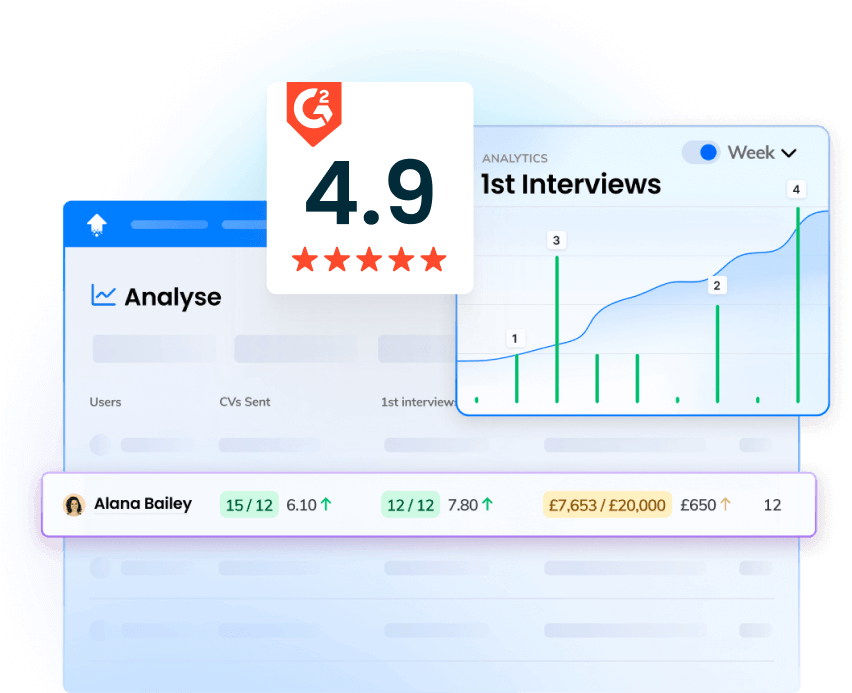The last three years have been a harsh reminder of how quickly things can change. After COVID-19, rampant inflation, and the cost-of-living crisis – recruiters feel the need to become more scalable and flexible. As recruiters use SaaS tools and have SaaS clients, let’s see what we can learn from them as SaaS is renowned for flexibility and scalability.
You might have already heard ‘scalability’ and ‘flexibility’ talked about 100 times before. So – what do they mean?
Scalability
The main goal of scalability is to increase the number of leads and customers without proportionally increasing operational spending. SaaS companies have an unfair advantage with this as their products live in the cloud! But there’s a lot more to their scalability tactics than that.
4 Reasons why SaaS companies are shaped to scale:
1. Subscription-based model – knowing how many customers they have, and how many (on average) they gain and lose each month, established SaaS companies have a predictable revenue stream. This helps them plan and allocate resources with more confidence than companies without one.
2. Free trials – it’s common for SaaS websites to offer free trials to visitors. Larger SaaS companies will have sales teams but lots of customers convert without them if they’re getting plenty of value from their free trial.
3. Automation sequences – SaaS companies often give away content for free (eBooks, PDFs, checklists, etc.). Upon download, an email automation sequence begins that nurtures leads to become paying customers. This can return a regular flow of new customers without a sales team saying a word!
4. Data-driven decisions – SaaS companies study data meticulously. They’re known for running experiments and adjusting their approach based on results. As they discard what doesn’t perform and optimize what does, they can make decisions more confidently as test results prove that customers are responding well to it.
Those were just a few examples of why SaaS companies are so scalable. There are many more.
Flexibility
Flexibility refers to the ability to pivot in any part of the business. This could mean changing the product, how they attract customers, how they serve them, etc. SaaS companies are known for their ‘lean’ approach. They make changes fast as they’re constantly learning about customers and how their products are being received.
3 Reasons why SaaS companies are flexible:
1. Modern tech – SaaS companies use lots of SaaS products themselves, as they’re more flexible than traditional legacy systems.
2. An ‘agile’ approach – SaaS don’t spend years working to release a ‘100%’ finished product for customers. Instead, they release something small but valuable for customers. And then they improve it based on customer feedback. This keeps them focused on the customer and the market at all times, ready to make any adjustments.
3. A customer-centric approach – recurring revenue comes from recurring customer impact. Every company knows this but it’s often forgotten as companies grow. The SaaS mindset is hellbent on giving customers as much value as possible, so they never lose sight of customers’ needs.
They’re always listening and reviewing feedback to optimize products and services accordingly.
How to Build SaaS-Like Scalability and Flexibility Into Your Recruitment Agency
1. Harness Data and Review It Regularly
All SaaS companies’ decisions are data-driven. Marketing, website analytics, app usage – data is collected everywhere as it shows them how customers engage with their products and services. Recruiters can do the same.
Key data for recruiters to collect & review:
Prospect data – learn more about your prospects to spot patterns and find the right prospects faster. Add what you’ve learned to your buyer personas.
- Client data – look at your best clients to see what similarities they share. Industry, niche, company size, company values, etc.
- Application data – the source of the application can tell you a lot about how effective each one is. For instance, applications with a cover letter submitted via your website might be the most effective at leading to a placement. Whereas, LinkedIn’s ‘Easy Apply’ submissions might be the least effective.
- Interview data – review interview feedback and assessments & skills valuations. What’s going right and wrong in the interviews – could you improve them?
- Performance data – time-to-hire, conversion rates at different recruitment stages, cost-per-hire, etc. the most important metrics of all.
- Feedback and survey data – review candidate, survey, and hiring manager satisfaction data to learn how your service is being received.
This is hugely valuable information that might not always be easy reading but it’s essential. Because if a client/prospect isn’t happy, they won’t always tell you. They’ll just move on. So, it’s better to learn what people did and didn’t like so you can adjust.
As long as you stay focused on the metrics above, data shouldn’t be overwhelming as you’ll stay focused on the metrics that help you become more accurate and effective.
2. Use More SaaS Tools & Automation to Increase Scalability
Trying new tools and automating processes can be overwhelming but both become simpler when you’ve defined your workflows, what’s a ‘must have’, and what’s a ‘nice to have’. After you’ve written out your services’ steps and what you need from the software – you’re ready. Now you can automate tedious processes and find new ways of working that save buckets of time and reduce no-shows’.
A common fear is that clients and prospects will get a worse experience with automation. But that’s not the case. If you’ve segmented audiences and built workflows tailored to their needs – their experiences will be better, not worse. Automation streamlines the tedious parts while giving you more time and focus on the parts of the process that require your attention.
SaaS tools for recruiters to try:
- Scheduling automation – sending manual invitations invites room for error. Try platforms like Calendly and Doodle.
- Video conferencing – offer clients and prospects a more convenient virtual meeting with tools like Odro, Zoom, and Google Meet.
- Feedback – gain valuable customer insights with tools like SurveyMonkey and SmartSurvey.
- Productivity – keep track of tasks and centralize communication in one place with tools like Lever, Asana, and Trello.
- Motivation – all of the above loses impact if motivation is low! OneUp Sales boosts productivity and motivation to build a culture that recruiters love to be part of.
Essential automation for recruiters:Applicant Tracking System (ATS) – diving into your ATS’ full capabilities can help you automate and save time on job openings, resume parsing, and interview scheduling tasks.
Automated email campaigning for prospects – effective communication is key as your prospect might be in demand. Create an email campaign to automate everything from application acknowledgement, interview scheduling, and follow-ups.
Social media scheduling – set logic-based roles for your vacancies to select which ones are posted to which social media sites, and the date they are posted/removed, etc. Not only does this help you secure more applicants, it also gets more eyes on your agency.
A simple way to become more scalable is to review yesterday’s to-do list and break tasks down, step by step. Ask whether this task could be automated. And if it can’t, maybe you could at least create a template to reduce the workload.




















